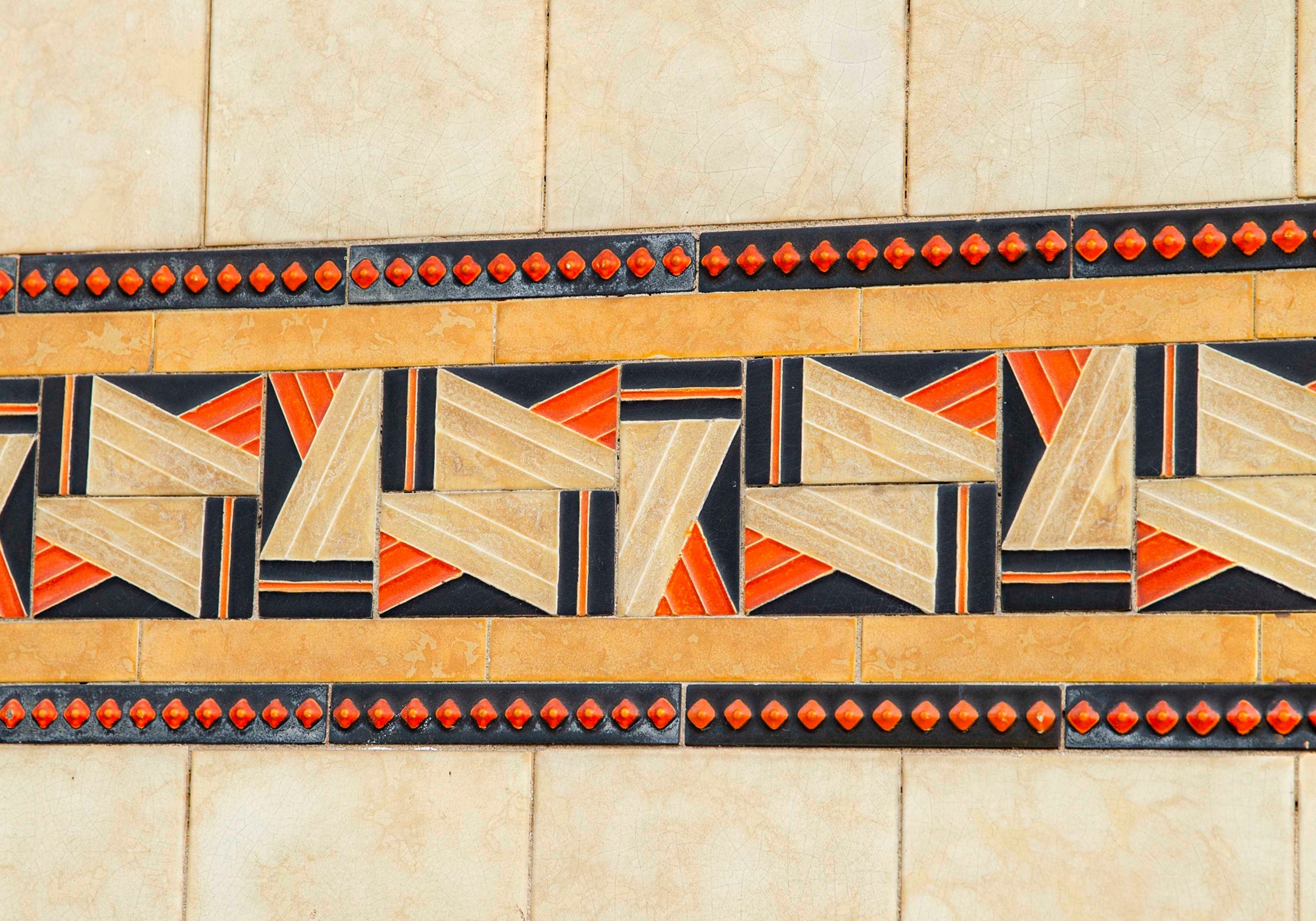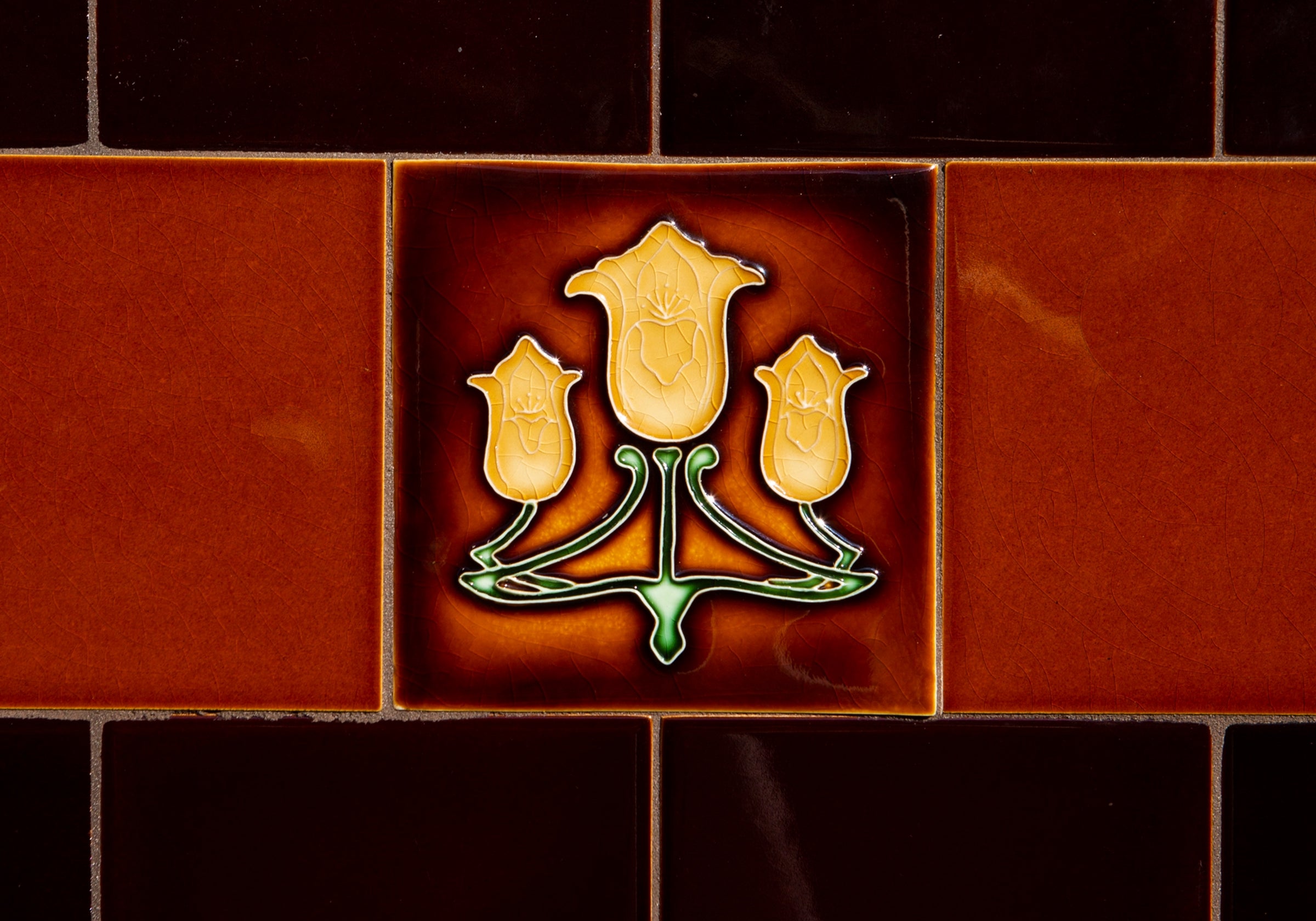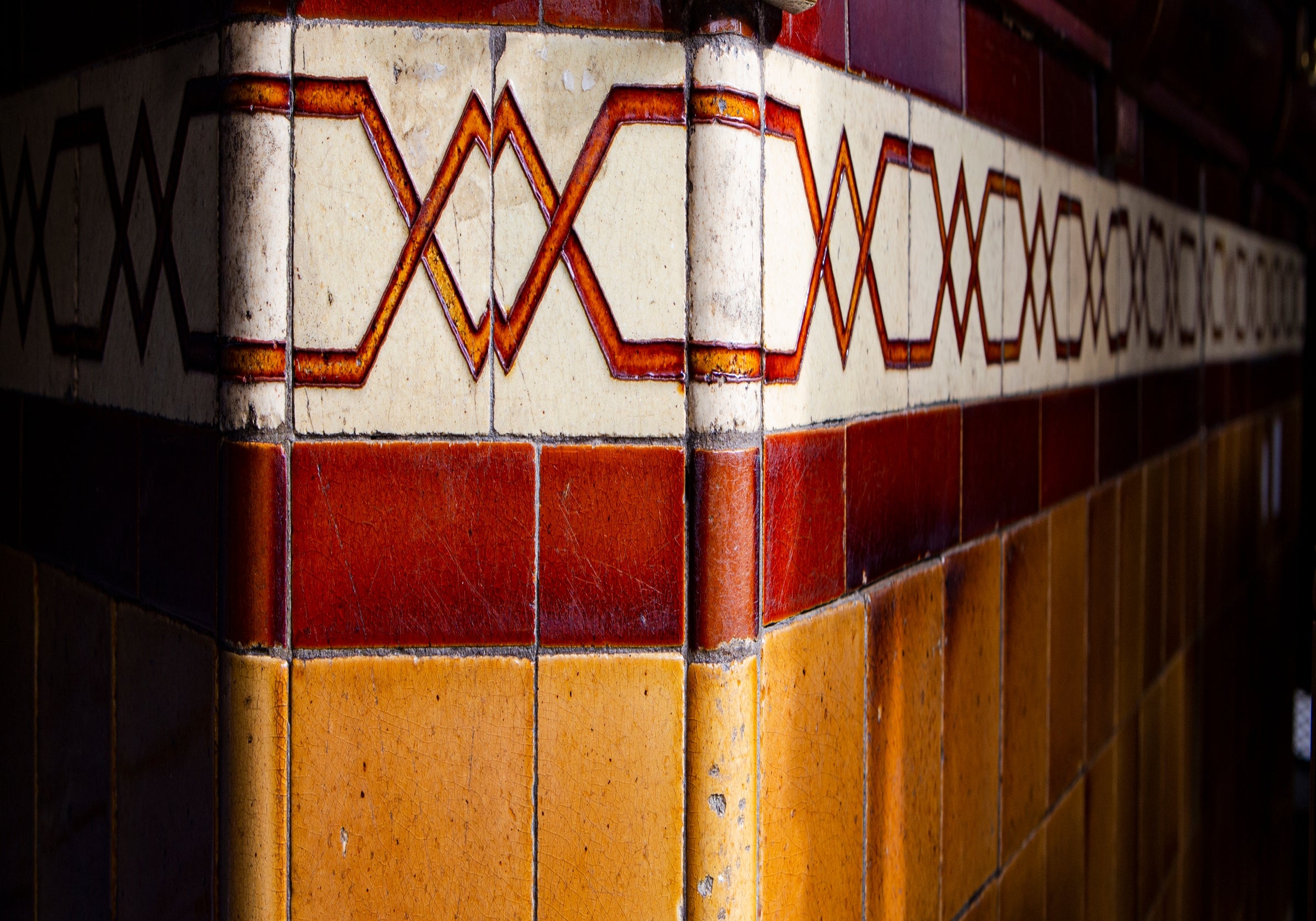QUALITY IN QUADRILATERALS
You may well know of our penchant for pub tiles. We’ve showcased them on our socials; immortalised The Shakespeare Hotel’s on a t-shirt; and skateboard decks celebrating local gems hang on the brewery wall, courtesy of our sister company, Pass~port.
Even our branding itself regularly features diamond shapes – a nod to the tile-work of not only our own bar, but that of the beloved institutions we service across the east coast.
Indeed, a well-tiled pub is a beautiful thing. Classy, enduring, timeless. But where did the tile trend come from and why did it start? The answers to these questions are pretty colourful, depending on who you ask…
EXQUISITE PISS? LITERALLY?!
Pubs began to bring in tiling in the 1920s, around the same time that many public buildings did, from hospitals to swimming pools, as part of a movement towards hygiene. Think of inner-city train stations like St James, Museum and even parts of Central; they’ve all got tiles you could expect to find at your go-to Surry Hills watering hole.
There’s many who argue that ‘hygiene’ is a polite way to phrase the reason behind tiling pubs however. That’s because the move came into vogue during the time of Temperance. This was the government-mandated early closure of pubs that was introduced in 1916, in an effort to curb excessive alcohol consumption.
The strategy proved to be somewhat counter-productive. With pubs closing by 6PM, workers would knock off and flock to the bar to squeeze in as many beers as they could beforehand. This is where the expression “6 O’clock Swill” comes from. As punters rapidly loaded to the gills, the result was understandably messy, with vomit and even open urination a common result.
Whether the human-waste thing is true or urban legend, as you can imagine, the ease of cleaning made tiles the ideal choice of surfaces for publicans. Staff could simply give the place a hose down at the end of the night and knock off themselves.

















